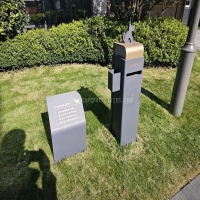Welcome to the website for landscape facilities products and knowledge.
What are the environmental impacts of producing landscape tables, and how are they mitigated?
The production of landscape tables, while aesthetically pleasing and functional, carries significant environmental implications. From raw material extraction to manufacturing and transportation, each stage contributes to deforestation, carbon emissions, and waste generation.
Key Environmental Impacts:
1. Deforestation: Many landscape tables are made from hardwoods, leading to habitat destruction and biodiversity loss.
2. Carbon Footprint: Energy-intensive manufacturing processes and long-distance transportation increase greenhouse gas emissions.
3. Chemical Use: Treatments like varnishes and preservatives can release toxic substances into ecosystems.
Mitigation Strategies:
- Sustainable Materials: Opt for FSC-certified wood, bamboo, or recycled materials to reduce deforestation.
- Local Sourcing: Minimize transportation emissions by using locally available resources.
- Eco-Friendly Finishes: Water-based or natural oils replace harmful chemicals in table treatments.
- Circular Design: Modular or recyclable designs extend product lifespans and reduce waste.
By adopting these practices, manufacturers can create landscape tables that blend beauty with environmental responsibility, paving the way for a greener future.
Related search:

Recommendation
Outdoor cat and dog feces trash can; Community pet trash can; Metal multi-color design